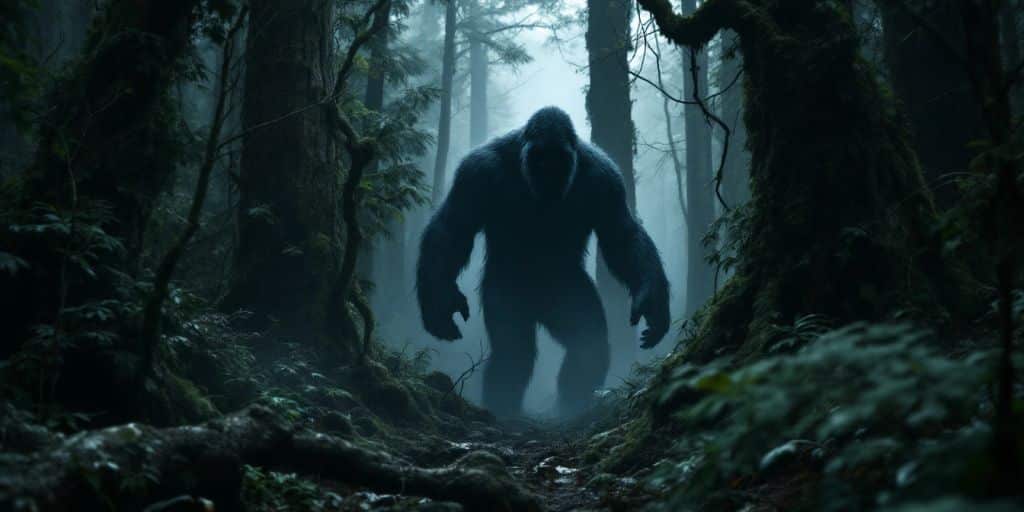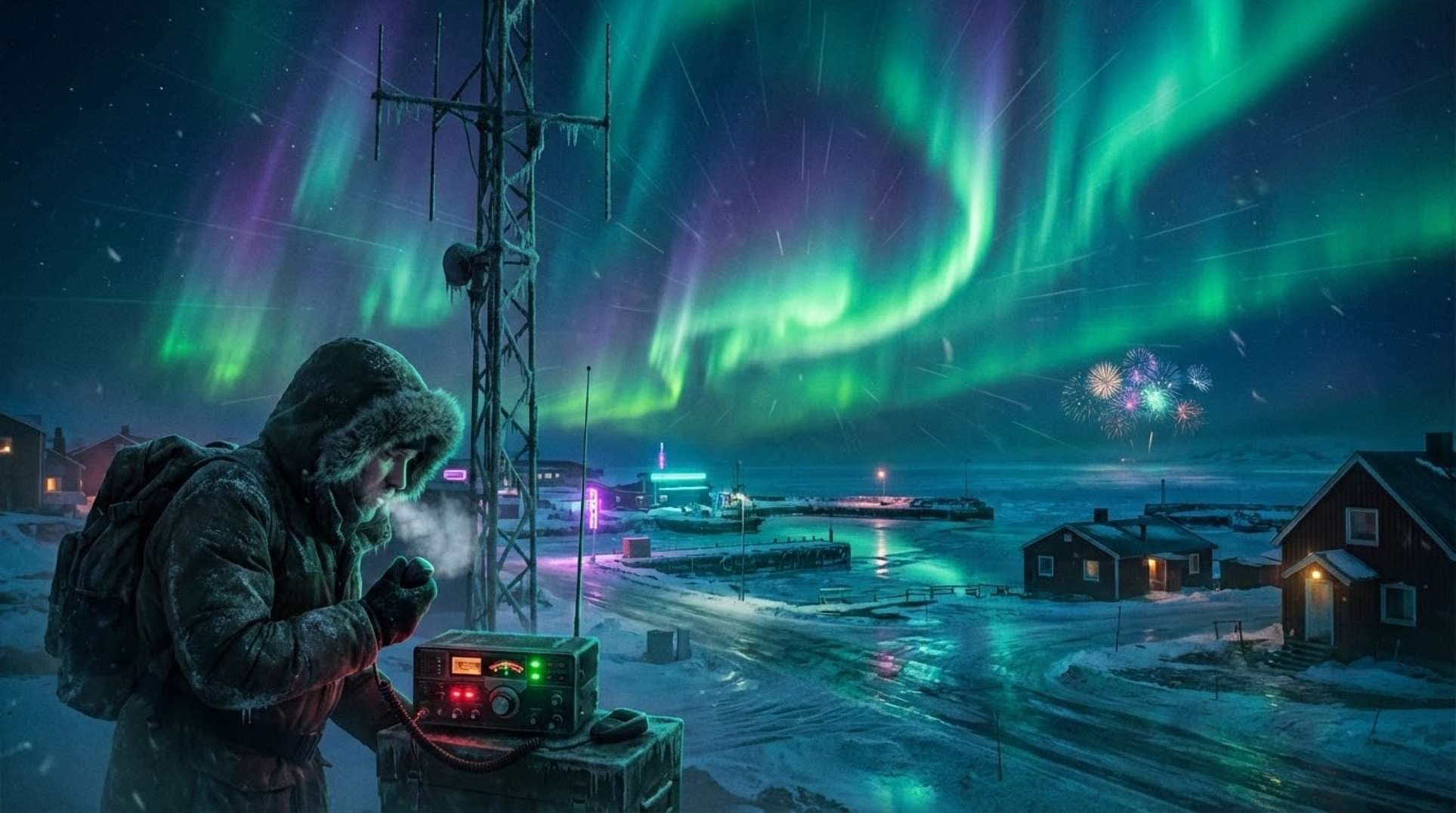Bigfoot, also known as Sasquatch, has been a part of folklore for generations. Many people have claimed to see this mysterious creature, leading to a mix of belief and skepticism. This article explores the history, science, and theories surrounding Bigfoot, helping to determine if this legendary being is a myth or a reality.
Key Takeaways
- Bigfoot sightings date back to Native American stories and continue to modern times.
- Scientists have conducted various tests, but none have confirmed Bigfoot’s existence.
- Many claims are hoaxes, making it tricky to know what’s real.
- Bigfoot is a popular figure in movies, books, and merchandise.
- Different theories suggest Bigfoot could be an ancient ape or something from another dimension.
Historical Bigfoot Sightings

Early Native American Legends
Many Native American tribes have long shared stories of a creature resembling Bigfoot. These tales often describe a "wild man" or "hairy giant" that roams the forests. The word "Sasquatch" itself comes from the Halq’emeylem language, meaning "wild man." These legends have been passed down through generations, highlighting the deep cultural significance of this mysterious being.
Pioneer Accounts
In the 19th century, pioneers in North America began reporting sightings of large, ape-like creatures. One notable account from 1884 described a creature resembling a gorilla captured in British Columbia. As more settlers moved west, they shared their own encounters, contributing to the growing legend of Bigfoot. Many of these stories, while often dismissed as hoaxes, fueled public interest and curiosity.
Modern-Day Encounters
In recent decades, numerous sightings have been reported across North America. The 1958 discovery of giant footprints in California sparked a media frenzy, leading to the term "Bigfoot" becoming widely recognized. Despite the lack of concrete evidence, the fascination with Bigfoot continues to thrive, with many claiming to have seen the creature in various locations.
The stories of Bigfoot serve as a reminder of the mysteries that still exist in our world, blending folklore with modern curiosity.
| Year | Location | Description |
|---|---|---|
| 1884 | British Columbia | "Gorilla-type" creature sighting |
| 1958 | Bluff Creek, CA | Discovery of giant footprints |
| 1967 | Northern California | Patterson-Gimlin film captures Bigfoot |
These historical accounts illustrate the enduring nature of Bigfoot sightings, from ancient legends to modern-day encounters, keeping the mystery alive.
Scientific Investigations into Bigfoot
DNA Analysis
Scientists have conducted various tests to uncover the truth about Bigfoot through DNA analysis. Hair samples thought to belong to Bigfoot have been tested, but most results show they come from common animals like deer or bears. Despite these findings, some researchers believe that science hasn’t yet caught up with the mystery of Bigfoot.
Footprint Evidence
Footprints are one of the most common pieces of evidence in Bigfoot investigations. These prints are often large and human-like but with some differences. Experts use plaster casts to preserve these prints for further study. While some footprints have been proven to be hoaxes, others remain unexplained, keeping the debate alive.
Audio Recordings
Audio recordings of strange sounds in the woods have also been linked to Bigfoot. Many enthusiasts claim these sounds are unique to the creature, but skeptics argue they could be from known animals. The search for clear audio evidence continues, as it could provide more insight into the existence of this elusive creature.
The quest for cryptids is a fascinating blend of anecdotal evidence, physical clues, and modern technology. While skepticism remains, the ongoing search keeps the mystery alive and continues to captivate the imagination of many.
| Evidence Type | Description | Status |
|---|---|---|
| DNA Analysis | Hair samples tested, mostly from common animals | Inconclusive |
| Footprint Evidence | Large, human-like prints, some hoaxes | Ongoing investigation |
| Audio Recordings | Strange sounds linked to Bigfoot | Needs verification |
The scientific community remains divided on the existence of Bigfoot, with many believing that the evidence is insufficient to confirm its reality. However, the allure of this legendary creature continues to inspire both researchers and enthusiasts alike, as they seek to uncover the truth behind the mystery of Bigfoot.
Theories About Bigfoot’s Existence
Surviving Gigantopithecus
One popular idea is that Bigfoot might be a surviving Gigantopithecus, a giant ape thought to have gone extinct long ago. Supporters of this theory believe that the thick forests and remote areas where Bigfoot is often seen could be perfect hiding spots for such a creature. Despite the lack of solid proof, this theory remains a favorite among believers.
Extraterrestrial Theories
Another interesting theory suggests that Bigfoot could be an extraterrestrial being. Some people think that the creature’s mysterious nature and the strange events reported during sightings, like unexplained lights in the sky, hint at a connection to aliens. While this idea is more speculative, it adds an extra layer of mystery to the Bigfoot legend.
Interdimensional Being
A more unusual theory proposes that Bigfoot might be an interdimensional being, able to move between our world and another dimension. This could explain why the creature is so hard to find and why physical evidence is so rare. Although this idea stretches the imagination, it shows how far some will go to explain the ongoing mystery of Bigfoot.
The search for Bigfoot continues to spark curiosity and debate, with many theories attempting to explain its existence.
In summary, the theories about Bigfoot range from it being a surviving prehistoric ape to a being from another dimension. Each theory reflects the human desire to understand the unknown and the mysteries that surround us. However, the scientific consensus is that Bigfoot, and alleged evidence, is a combination of folklore, misidentification, and hoax rather than a living animal.
Bigfoot Sightings Around the World
Bigfoot, also known as Sasquatch, is said to roam not just in North America but across the globe. Reports of sightings have emerged from various continents, each adding to the mystery surrounding this elusive creature.
North America
- The Pacific Northwest, especially Washington and Oregon, is famous for its numerous sightings.
- According to the Bigfoot Field Researchers Organization, Washington has over 2,000 reported sightings.
- Other states like California and Pennsylvania also have significant numbers, with California reporting over 1,600 sightings.
Asia
- In Asia, creatures similar to Bigfoot are reported, such as the Yeti in the Himalayas and the Yeren in China.
- These creatures share similarities with Bigfoot, often described as large, hairy, and elusive.
- Local legends often depict them as guardians of the forests.
Australia
- Australia has its own version known as the Yowie. Reports of Yowie sightings date back to the early settlers.
- Many Australians believe in the Yowie, claiming it roams the bushlands.
- Sightings often describe it as a large, ape-like creature, similar to Bigfoot.
| Region | Notable Sightings | Estimated Reports |
|---|---|---|
| North America | Washington, Oregon | 2,000+ |
| Asia | Yeti, Yeren | 500+ |
| Australia | Yowie | 300+ |
The fascination with Bigfoot and its global counterparts reflects a deep-rooted interest in the mysteries of nature and the unknown.
As we explore these sightings, it becomes clear that the legend of Bigfoot transcends borders, captivating imaginations worldwide.
Eyewitness Accounts of Bigfoot
Personal Testimonies
Many people claim to have seen Bigfoot, sharing their stories with excitement and fear. Over 10,000 sightings have been reported in the U.S. alone in the last 50 years. Here are some common themes in these accounts:
- Height: Most witnesses describe Bigfoot as being between 8 to 10 feet tall.
- Appearance: Many say it is covered in dark, shaggy hair.
- Behavior: Reports often mention the creature being shy or elusive, quickly disappearing into the woods.
Video and Photographic Evidence
One of the most famous pieces of evidence is the Patterson-Gimlin film from 1967. This video shows a large, hairy figure walking through a forest. While some believe it to be real, others think it was a hoax. Here’s a quick look at some notable videos:
| Year | Description | Outcome |
|---|---|---|
| 1967 | Patterson-Gimlin Film | Debated authenticity |
| 1994 | Freeman Footage | Still scrutinized |
| 2000 | Skookum Cast | Skeptics doubt it |
Skeptical Perspectives
Despite many claims, skeptics argue that many sightings can be explained by:
- Misidentification: People may mistake bears or other animals for Bigfoot.
- Hoaxes: Some sightings have been proven to be faked.
- Psychological factors: The human brain can create false memories, especially in stressful situations.
The quest for truth about Bigfoot is filled with excitement and skepticism. While many believe in its existence, others remain doubtful, pointing to the lack of concrete evidence.
Conclusion
Eyewitness accounts of Bigfoot are a mix of thrilling stories and skepticism. Whether real or imagined, these tales continue to capture the imagination of many, fueling the ongoing debate about the existence of this legendary creature.
Bigfoot in Popular Culture

Bigfoot, also known as sasquatch, has made a significant mark in popular culture. This legendary creature is often compared to famous icons, showing its wide appeal. In fact, a 2020 poll revealed that about 1 in 10 American adults believe Bigfoot is a real creature. Interest in Bigfoot has surged, with over 200,000 searches for the term in the U.S. each year.
Movies and TV Shows
Bigfoot has been featured in numerous films and television shows. Some notable examples include:
- Harry and the Hendersons (1987) – A family-friendly film where Bigfoot is portrayed as a friendly creature.
- Finding Bigfoot (2011) – A reality TV series that follows a team searching for evidence of Bigfoot.
- Expedition Bigfoot (2019) – A show that investigates sightings and evidence.
Books and Comics
Bigfoot has also inspired various books and comics, contributing to its mythos. Some popular titles include:
- The Bigfoot Book: The Encyclopedia of Sasquatch, Yeti, and Other Man-Primates – A comprehensive guide to Bigfoot and similar creatures.
- Sasquatch: Legend Meets Science – A book that explores the scientific aspects of Bigfoot sightings.
- Bigfoot: The True Story of Apes in America – A narrative that combines folklore and research.
Merchandising
The fascination with Bigfoot has led to a variety of merchandise, including:
- T-shirts featuring Bigfoot graphics.
- Toys and figurines of the creature.
- Bigfoot-themed events and festivals that attract enthusiasts.
Bigfoot’s presence in popular culture reflects our society’s fascination with the unknown and the mysterious. Whether as a subject of serious investigation or a source of entertainment, Bigfoot continues to capture our imagination.
The Role of Technology in Bigfoot Research
Drones and Thermal Imaging
Technology has changed how we search for Bigfoot. Drones equipped with thermal imaging can cover large areas quickly, helping researchers spot unusual heat signatures in the woods. This method allows for:
- Wider coverage of remote areas.
- Real-time data collection without disturbing wildlife.
- Cost-effective exploration compared to traditional methods.
Audio Analysis
Many enthusiasts claim to have recorded Bigfoot sounds, such as howls and knocks. Audio analysis tools help researchers:
- Identify the source of the sounds.
- Filter out background noise.
- Compare recordings to known animal calls.
Satellite Imagery
Satellite technology provides a unique perspective on large areas of land. Researchers can use it to:
- Monitor changes in forested regions.
- Identify potential habitats for Bigfoot.
- Track unusual patterns that might indicate Bigfoot activity.
The use of technology in Bigfoot research opens new doors for discovery, allowing us to explore the unknown in ways we never thought possible.
In conclusion, technology plays a crucial role in the ongoing search for Bigfoot. From drones to audio analysis, these tools help researchers gather evidence and explore the mysteries of this legendary creature. As technology advances, who knows what we might uncover?
Technology plays a crucial role in the search for Bigfoot, helping researchers gather evidence and analyze data more effectively. From using drones to capture aerial footage to employing thermal imaging cameras for night investigations, modern tools enhance our understanding of this elusive creature. If you’re curious about the latest findings and want to dive deeper into Bigfoot research, visit our website for exclusive content and resources!
Final Thoughts on Bigfoot: Fact or Fiction?
In conclusion, the mystery of Bigfoot continues to spark curiosity and debate. While many people share stories of sightings and encounters, solid proof remains elusive. Scientific studies have not confirmed Bigfoot’s existence, and numerous hoaxes have muddied the waters. Yet, the fascination with this legendary creature endures, fueled by tales from both believers and skeptics. Whether Bigfoot is a real creature or just a myth, it serves as a reminder of our desire to explore the unknown and the stories that connect us to nature.
Frequently Asked Questions
What is Bigfoot?
Bigfoot, also called Sasquatch, is a large, hairy creature said to walk on two legs. Many believe it lives in the forests of North America.
Are there real sightings of Bigfoot?
Many people claim to have seen Bigfoot over the years, but there is no scientific proof that it exists.
Why do some people believe in Bigfoot?
Some people believe in Bigfoot because of stories, videos, and personal experiences, even though many of these are not proven.
What has science found about Bigfoot?
Scientists have studied hair and footprints that were thought to belong to Bigfoot, but most turned out to be from common animals.
Is Bigfoot a hoax?
There have been many hoaxes about Bigfoot, which makes it hard to tell what is real and what is fake.
Why is Bigfoot popular in culture?
Bigfoot is popular in movies, books, and TV shows, which keeps the stories alive and sparks interest in the legend.




